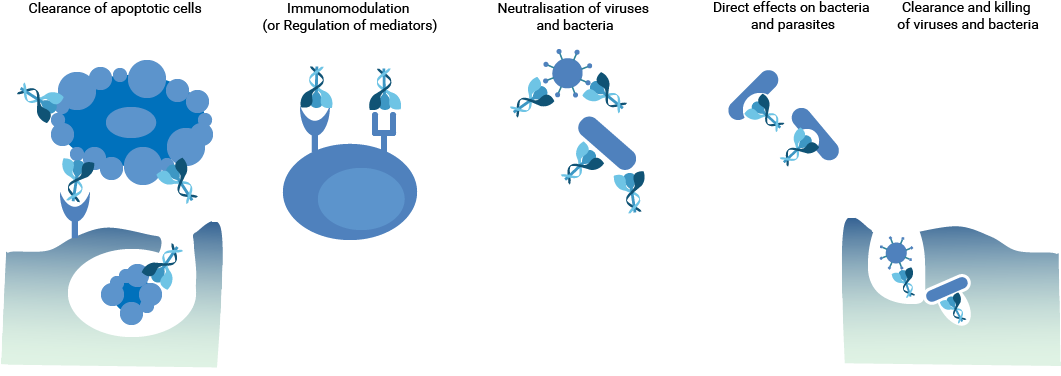Developing ground-breaking solutions in the fight against chronic lung disease in babies.
Our Solution
Surfactant SP-D is a natural anti-inflammatory defence protein found in the lungs. This protein is deficient in the lungs of premature neonates (and also adults with severe asthma and Chronic Obstructive Pulmonary Disease - COPD). We have developed a novel way to produce the functional part of SP-D. We believe that treatment with a novel version of a recombinant fragment of human SP-D (known as rfhSP-D) will prevent the development of neonatal chronic lung disease.
SP-D
We breathe in 10,000 litres of air every day. Our expansive lung surface, the area of around half a tennis court, is therefore exposed to a vast amount of infectious viruses, bacteria and other pathogens, alongside allergens and nanoparticles. It is essential that the lungs remain free from infection and inflammation to allow efficient breathing. SP-D is a natural defence protein which neutralises viruses and bacteria and stops lung infection, whilst clearing allergens and nanoparticulates and preventing inflammation. It is a major part of the human defence system against infection. SP-D is also important for the rapid removal of dead (apoptotic) cell debris from the respiratory tract. Thus SP-D is important for maintaining an infection free, non-inflamed healthy lung, which is essential for lung function. Unfortunately, SP-D is known to be deficient in lungs of babies developing neonatal chronic lung disease (nCLD), in adults with severe asthma and COPD. There is also a direct correlation of low SP-D levels with progression of nCLD. Replacement of this deficient natural protein may restore the lungs of these patients to a non-inflamed state and thus restore lung function or prevent the progression of disease.
Roles and functions of SP-D
Clinical studies in preterm neonates show that low SP-D levels are linked with increased risk of developing nCLD, consistent with data from animal models of Broncopulmonary Dysplasia (BPD). Treatment of lung inflammation has confirmed the anti-inflammatory role of SP-D in infectious, allergic and ventilation induced lung injury models. The recombinant fragment of human SP-D, which we have generated, mimics the natural function of the native human protein in a wide range of models including those directly relevant to mechanisms important in the development of neonatal chronic lung disease.
rfhSP-D
rfhSP-D consists of two parts, the anti-inflammatory functional binding domain and the trimerising neck region of the full length molecule. rfhSP-D lacks the majority of the collagen domain. Whilst maintaining many of the functions of the native protein, development of the fragment has many advantages as it is:
- Functional as an anti-inflammatory
- Functional as an anti-infective
- Easy to manufacture in high yields
- Easy to handle as it is extremely soluble, does not aggregate
- It can by lyophilized or frozen/thawed
- Produced as a trimer and does not oligermerzie like the full length molecule

